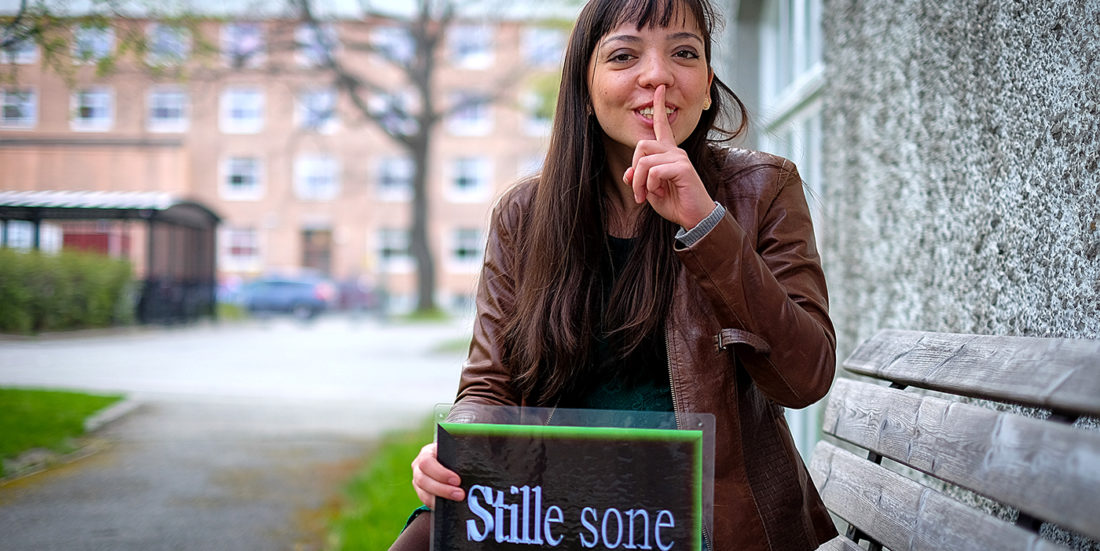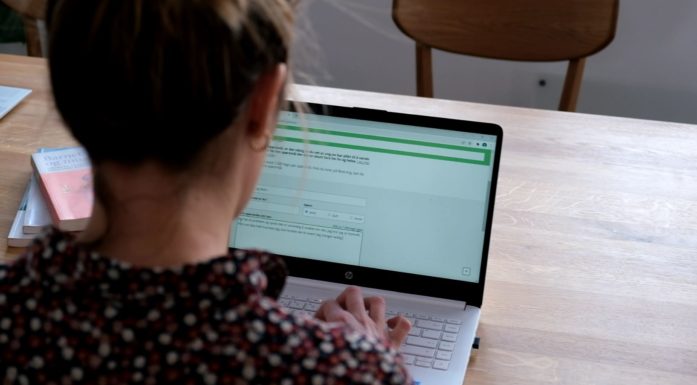Silence as a superpower
Silence is not an empty space. It has its own purpose, both in psychotherapy and in music. Olga Lehmann is working to build a theory of silence.
Imagine that you go to a psychologist for help in dealing with something difficult, or to understand yourself better. You sit down with the psychologist, and then she or he says that now you’ll sit together quietly. The psychologist says nothing. You say nothing. What happens in this silent space?

“Silence may result in better decisions, both in one’s own life and in business, because silence gives us more space for reflection, says Lehmann. Illustration photo: Thinkstock
“My experience and my research show that a tremendous amount happens in this space. Silence is not an empty space. Silence is a space for emotional experience. Silence is introspective space. And we can’t always find words for what happens inside us,” says Lehmann.
“A tension arises in this silent space, and we have to dare to go into it, into this field of tension. It takes courage, because we don’t know how to handle this and how to sustain ourselves in silence. We’re not used to it anymore,” she says.
Students uncomfortable – and satisfied
Lehmann is a PhD candidate in NTNU’s Department of Psychology. In parallel with her doctoral work, she also teaches students. She has used silence as an essential element in her teaching, and it has become an important element of her research. Lehmann’s teaching includes the course Experts in Teamwork (EiT), which is an interdisciplinary course required for all master’s students at the university.
She started every class with a period of silence, often related to a work of art dealing with the theme of silence. After the silence, she asked students to describe their experience, how they felt and what they had felt.
“Some wrote that they were disappointed, and that it was boring and annoying to have to deal with their own thoughts. And at the same time they wrote that ‘you take us out of the box. Other places we’re always expected to present and deliver. Here you ask us how we’re doing. It feels good,’” says Lehmann.

Lehmann says, “Art helps us express things we can’t necessarily find words for. And poetry, for example, is not about just about the words, but just as much about the rhythm, musicality and pauses in the verse structure.” Illustration photo: Thinkstock
Overall, the students said they were highly satisfied with Lehmann’s teaching. They also experienced their discomfort as useful and good.
“I allowed them to become aware of what they felt and experienced. They were obliged to reflect on themselves and their own feelings. Silence has a lot to do with observation. You’re given the space to reflect and become aware of your feelings, experiences and thoughts,” Lehmann said.
Can result in better decisions
We are surrounded by sounds, noise and impressions from our surroundings for a good part of the day. More and more people are taking yoga and mindfulness classes to find peace, and many people who sit in open office layouts dream of cubicles.
“Silence can result in better decisions, both in one’s own life and in business, because silence gives us more room for reflection,” says Lehmann.
“Often it’s leaders who talk a lot and express themselves well who attain positions and power. But silence can be a superpower! In the US, silence is growing into a movement called the ‘Quiet Revolution’, which plays up the introvert’s qualities,” she says.
Words, words
Psychology seeks to articulate feelings and experiences through words. Words serve as a tool to analyse, sort and understand.
“Psychology is interested in feelings and experiences, and language has been the main channel for navigating feelings and sensations. Psychologists like to do interviews and surveys and to talk. But everyone knows how hard it can be to put words to certain feelings and that we struggle to explain some of our deepest experiences in life in words,” she said.
Lehmann has seen that silence has a function, both in psychotherapy and in other contexts. Now she is working on building a theory of silence.

Lehmann has seen that silence has purpose, both in psychotherapy and in other contexts. Now she’s working to build a theory of silence. Photo: Thinkstock
“There’s a hole in terms of our knowledge of silence, and I’m working on creating a theory to understand the function of silence in everyday experiences. I’m studying what silence does to people—and how to use silence in therapy. This fills a gap in psychological theory,” she says.
Lehmann has published dozens of scholarly articles, which have created so much interest that she has six book contracts lined up. Two of the books are in preparation: The cultural Psychology of Silence. Poetics of everyday life in the borders of existence and experience (Springer Series in Psychology and Education) and Poetry and imagined Worlds: Creativity and everyday experience (Palgrave McMillan). Lehmann is the editor for the latter book, which is being written in conjunction with several authors.
Wordless therapy
In her native country of Colombia, Lehmann had a psychology practice where she found silence to be a therapeutic tool.
In one case, she treated a boy who had experienced seeing his father being brutally murdered. The boy would avoid talking about this event at all costs, to the point that he wouldn’t talk at all. His family was greatly concerned that he needed to process the trauma.
Researcher Grand Prix
Olga Lehmann was one of nine participants in the regional Researcher Grand Prix 2016 in Trondheim.
Researcher Grand Prix (FGP) is a fun and exciting competition in science communication for doctoral candidates. FGP first holds regional finals in several cities where the best research communicators are selected. The regional winners then meet in the national finals where Norway's best research communicator is crowned.
The regional Trondheim finale of Researcher Grand Prix 2016 took place at Byscenen in Trondheim on 29 September.
When the boy came to Lehmann for treatment, the first thing she said was “Here you don’t need to talk about what happened to your father if you don’t want to.” She didn’t speak much more during the treatment session. Nor did the boy. But he asked if they could play a song by the group Radiohead. Lehmann pulled up the song on Spotify and played it.
After a few weeks the boy’s mother contacted her, profusely grateful that the boy was doing so much better.
“The boy had found it very stressful that the family was pushing him to talk, and he needed confirmation that it was okay not to talk about what he had experienced. We have different emotional rhythms, and for him it was actually important not to talk about this yet,” says Lehmann.
Three-part research
Lehmann has divided her research into three parts. One part is related to constructing a theory of the role of silence in our lives. Another part is related to how art uses and relates to silence.
“Art helps us express things we can’t necessarily find words for. And poetry, for example, isn’t just about words, but just as much about the rhythm, musicality and pauses in the verse structure,” she says.

We are surrounded by sounds, noise and impressions from our surroundings for a good part of the day. More and more people are taking yoga and mindfulness classes to find peace, and many people who sit in open office layouts dream of cubicles. Photo: Thinkstock
The third part of Lehmann’s research is related to music. Lehmann cites connections between music and silence, including the fact that music uses silence as an important element.
“Beethoven is one of the masters of using silence and pauses to create great music that touches us. Silence is an important part of the melody and mood of the music,” she says.
Silent musical works
In her teaching, Lehmann uses both art and music that deal with silence. One of the pieces she has exposed students to is John Cage’s legendary musical work 4’33”, which consists of 4 minutes and 33 seconds of silence. Or expressed another way: all the other sounds of the place where the piece is performed are what constitute the music. The crowd’s wonder and the random sounds that occur at the venue are meant to be the actual experience.
Lehmann uses concepts from musicology—like polyphony—to elaborate on her theory. Polyphony implies that there may be many tones simultaneously, and she draws a parallel to how we experience not only one emotion in a quiet moment, but many different and layered emotions.
“Some psychological theories maintain that we have only one main feeling at a time, but my investigations of silence show that we have several emotions in parallel. Our mind is like a small community, or like a theatre with many characters on stage simultaneously. And these characters can speak with conflicting voices and opinions. For example, my students who had to deal with silence were both frustrated and satisfied at the same time,” she says.
“My research shows that if we listen carefully, silence can help make our lives more fulfilling and more complete,” Lehmann says. “It is not about breaking the tension of silence. It is about paying attention to the tension that silence creates. This is where the gold lies! ”
Some of Olga Lehmann’s scientific publications:
“Silence in the musical scores of human phenomena” in SAGE Culture & Psychology.
The chapter “Man’s Search for Extra-Ordinary Answers in Life: Silence as a Catalyst for Crisis-Solving” in the book The Catalyzing Mind: Beyond Models of Causality.
“Something Blossoms in Between: Silence-Phenomena as a Bordering Notions in Psychology” in Integrative Psychological and Behavioral Science.
“Towards dialogues with and within at silence in psychotherapy processes: Why the person of the therapist and the client matters?” in SAGE Culture & Psychology.





